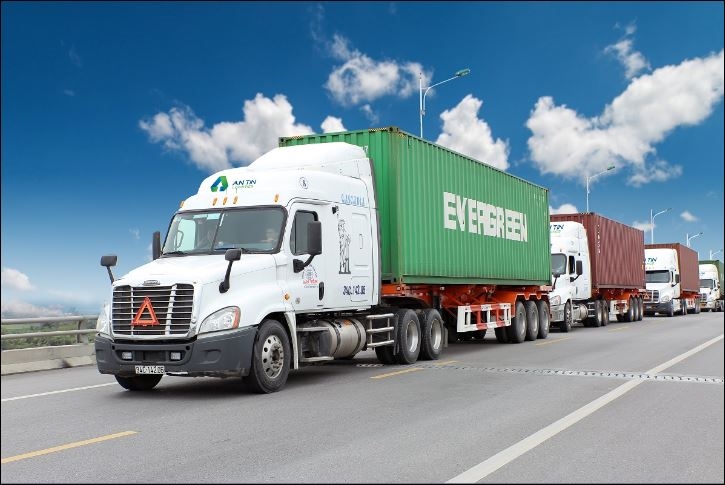
Reduce logistics costs, increase economic competitiveness
Identified as an important type of service, the logistics industry (transportation, warehousing...) plays a role in supporting, connecting and promoting socio-economic development. Along with improving infrastructure and encouraging and supporting policies of the State, Vietnam's logistics industry has made many great strides, recognized internationally. However, logistics costs in our country are still high and need to continue to be optimized to increase the competitiveness of the economy.
Continuously growing at high double-digit levels
Developing logistics services not only brings added value and enhances the competitiveness of the economy, but is also associated with commodity production, import and export trade, transportation infrastructure, and information technology. news... According to Deputy Minister of Planning and Investment Tran Duy Dong, in recent years, Vietnam has actively improved mechanisms, policies and logistics infrastructure. Thanks to this, the capacity and ranking of Vietnam's logistics industry are improving. According to the World Bank's ranking, Vietnam currently ranks 64/160 countries in terms of logistics development and ranks 4th in the ASEAN region. The annual growth rate of Vietnam's logistics industry reaches 14-16%, with a scale of 40-42 billion USD/year.

Transport activities of the bussiness in Hai Duong.
Besides, logistics businesses in Vietnam are also increasing rapidly in number. To date, there are more than 3,000 domestic transportation and logistics businesses along with about 25 of the world's leading forwarding corporations providing services in Vietnam. The system of road traffic infrastructure, airports, seaports, warehouses, commercial infrastructure, and logistics centers is also constantly expanding on a large and widespread scale. Customs procedures and clearance times for exported goods have also improved significantly. From there, it makes an important contribution to the strong development of Vietnam's logistics industry.
However, one of the problems facing the logistics industry is that multimodal transport corridors have not yet been formed while the need for high-quality transshipment of goods is increasing. Vietnam still lacks centralized logistics zones with strategic locations, synchronized with systems of ports, airports, roads, and production facilities. Along with that, although our country's logistics businesses are large in number, they are still limited in scale, capital, and human resources. Most businesses providing logistics services in Vietnam are small and medium-sized enterprises, operating fragmentedly and lacking experience. At the same time, up to 93-95% of workers in these enterprises are not properly trained, mainly working in services in small supply chains. These issues are posing significant challenges for the development of Vietnam's logistics industry in the coming time.
Continue to reduce logistics costs
Reducing logistics costs, thereby helping to reduce prices and improve the competitiveness of goods and services is an important goal being aggressively implemented by the Government, ministries, branches and localities. In 2022, logistics costs in our country are estimated to account for about 17% of total domestic product (GDP), a significant decrease compared to 2018 (about 21% of GDP). However, the above figure is still high compared to the world average. According to the Action Plan to improve competitiveness and develop Vietnam's logistics services to 2025 approved by the Prime Minister, the goal is that by 2025, the contribution ratio of logistics services to GDP will reach 5-5. 6%, growth rate reached 15-20%, logistics costs decreased equivalent to 16-20% of GDP.
To achieve this goal, infrastructure is considered the most important factor. Deputy Minister of Planning and Investment Tran Duy Dong said that during the 15th National Assembly term, the National Assembly has decided to spend 2.87 million billion VND in the medium-term public investment plan for works and projects. In the two years 2022-2023, there will be more than 143,000 billion VND from the Socio-Economic Recovery and Development Program to invest in important works and projects. A large part of this resource is devoted to transportation infrastructure, the lifeblood of the economy and also the lifeblood of the logistics industry. In the past two years, many key infrastructure projects, important highways, and regional connections have been completed. The goal is that by 2025, our country will complete 3,000km of highways and by 2030, complete 5,000km of highways. In addition, coastal roads, connecting roads, seaports, airports... are also being focused on building, contributing to increasing the competitiveness of the economy as well as contributing to reducing logistics costs for these countries. enterprise.
Mr. Thomas Rooney, Senior Manager of Savills Hanoi Real Estate Services Company, said that the current logistics market has not yet fully exploited its potential. Supply has not really met demand, requiring flexibility to introduce new models and optimize available warehouse space. For example, the e-commerce industry needs large warehouse space to store many items as well as install systems to support picking and packaging. In addition, international manufacturers with high value-added products expect to have warehouse space to store goods after production. In fact, the supply of warehouse space in the Vietnamese market, especially in the Northern region, is still not much. Therefore, investors can consider building high-rise warehouses or smart port warehouses.
Leaders of the Ministry of Planning and Investment request localities to develop policies to support the development of effective logistics services, suitable to the socio-economic characteristics of each locality. In particular, it is necessary to create favorable conditions for logistics service businesses, especially small and medium-sized enterprises, in accessing capital sources, market development, training, and access to information.









